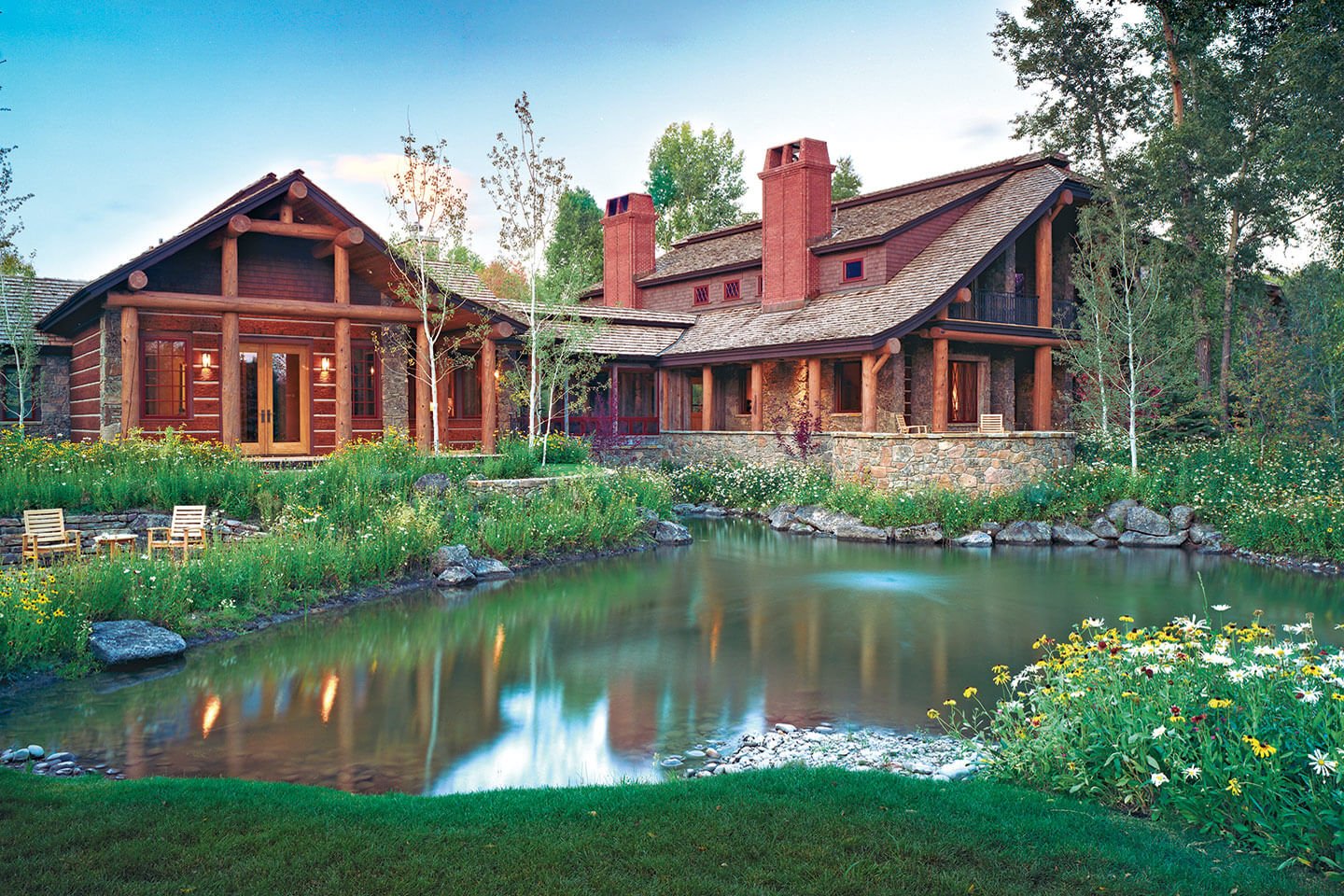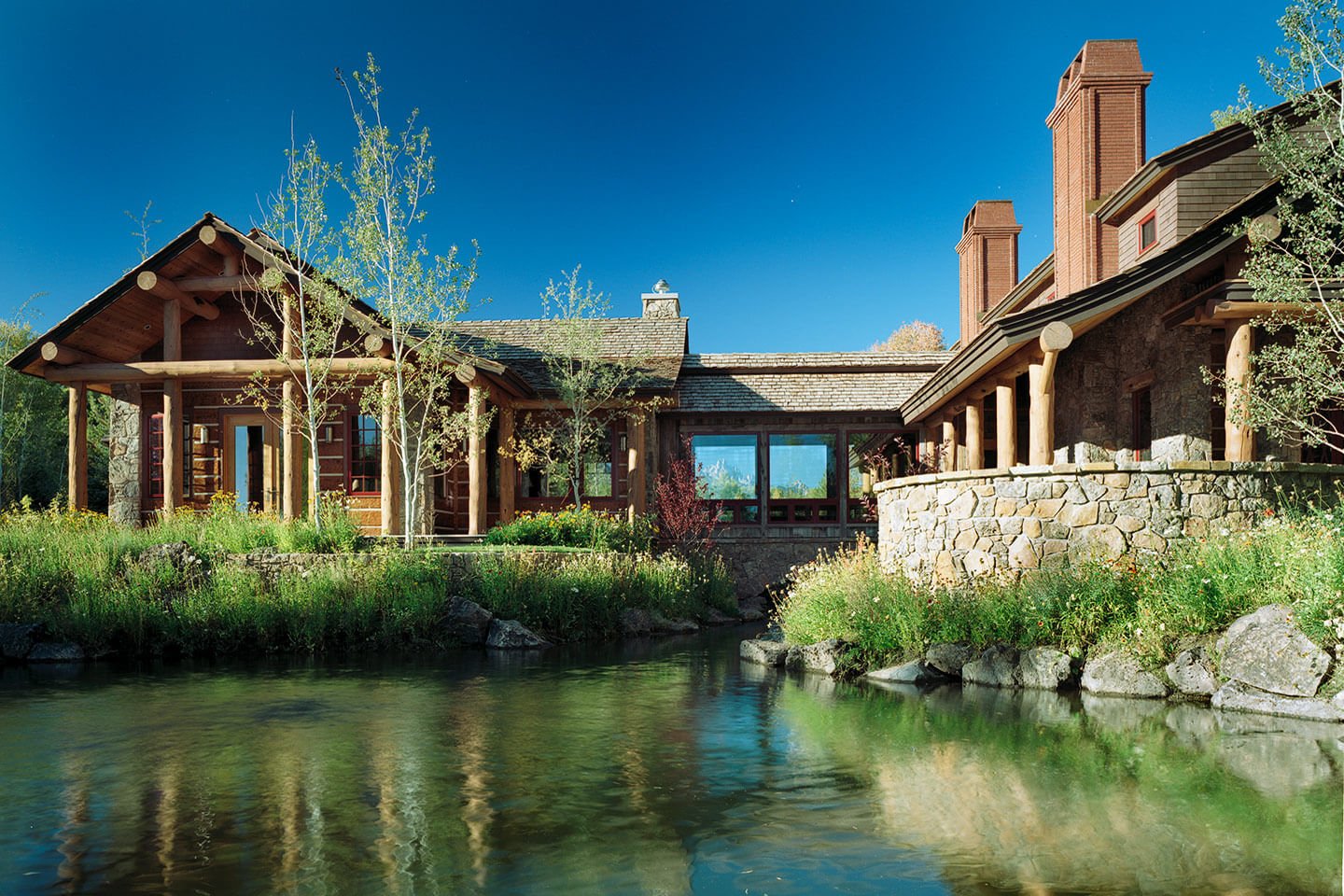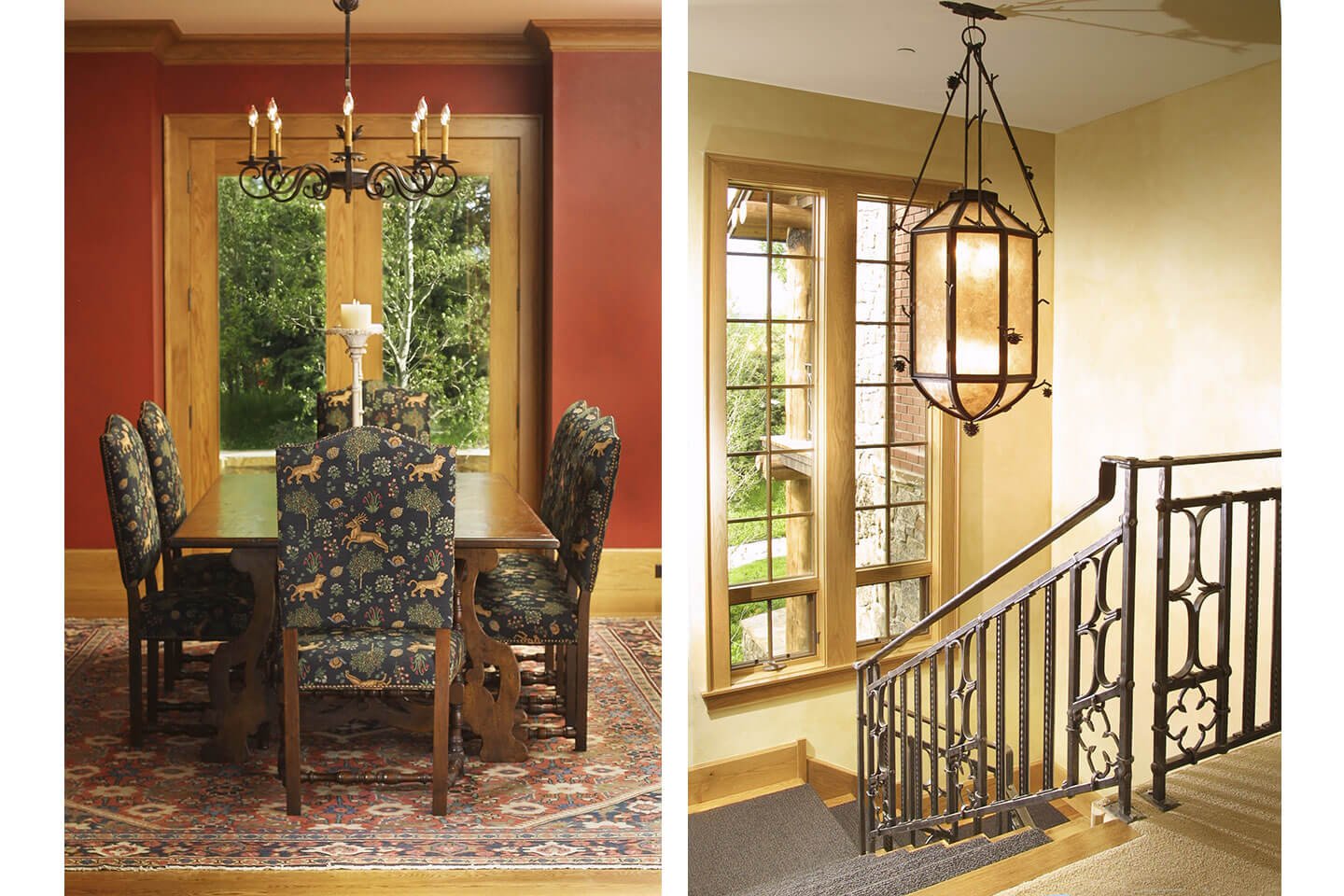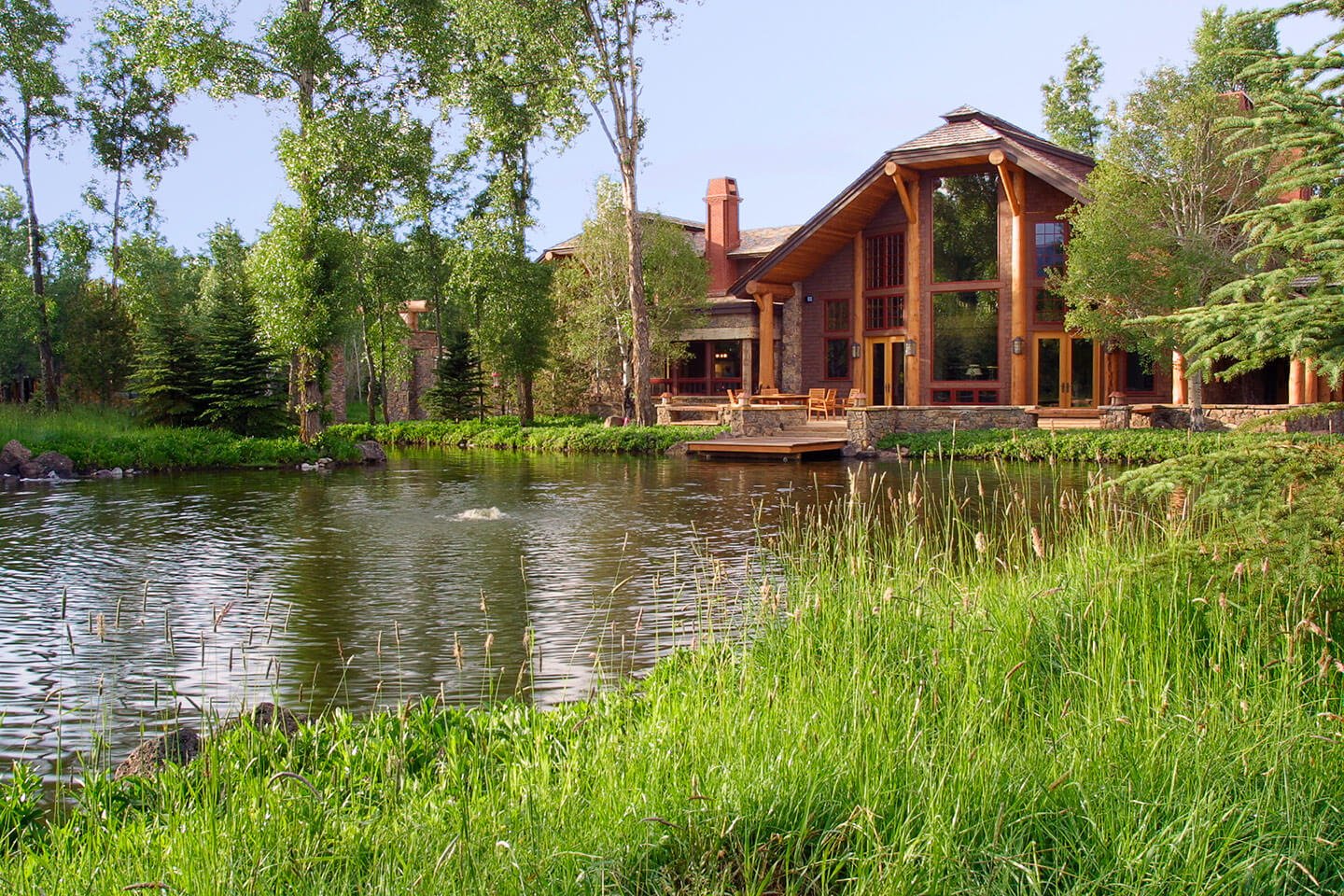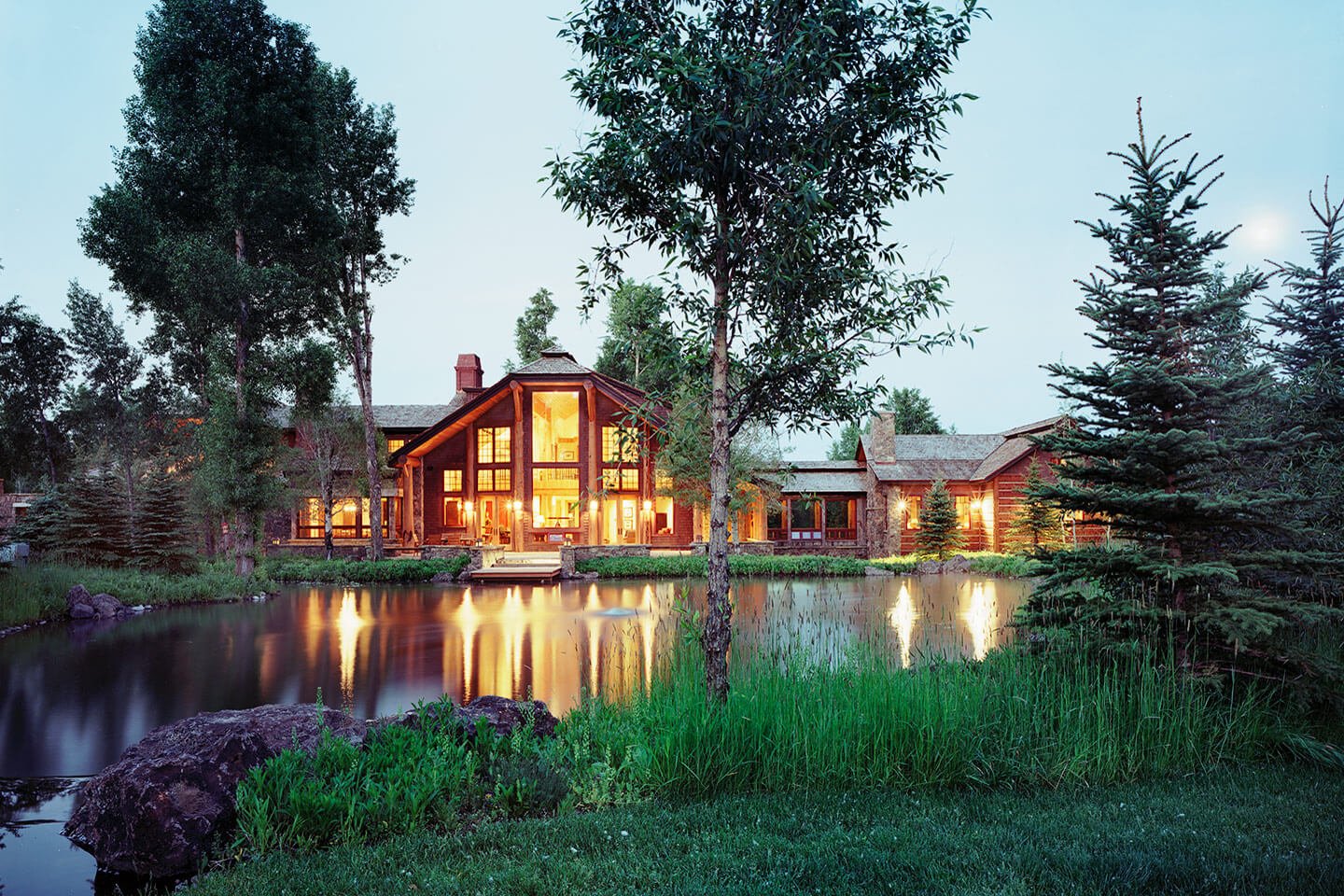WILDERNESS RANCH RESIDENCE
Raw timber, stone veneer and brick for a fanciful touch
Jackson Hole, Wyoming • 7,000 sq. ft.
Design Team: Chris Moulder, AIA; Garett Chadwick, Joshua Rourke
The natural beauty of Jackson Hole, Wyoming, including stunning views of the Rocky Mountains and abundant wildlife, drew our client to purchase a 3-acre site next to the Snake River. They hired Dubbe Moulder Architects to design a home that would provide a private, retreat-like atmosphere for themselves, family, and friends. Chris Moulder eagerly took on the project, and ideas flowed as fluidly as the nearby river currents. Moulder focused on designing not just a house but the entire site. This included arranging a main house, a guest house, vehicular circulation, and a variety of recirculating man-made ponds and streams designed to support a healthy population of football-sized Cutthroat trout year-round. These features completed the setting for the desired inspirational experience.
Texture is always important to DMA’s work. Materials that appear to have been in place for long periods of time have worked well in our designs and compliment the patterns established in the design vernacular of Jackson Hole. Oak timber weathers beautifully, long overhangs and covered porches cast dramatic shadows. Heavily raked stone veneers appear to have been stacked by some ancient civilization and even the careful suggestion of a more refined brick pattern work well toward a balanced composition.
The incorporation of different water features was very important to our clients. Water, as a moving element, creates a "white noise" or natural music, which, with strategically placed windows on a comfortable day, can be piped throughout the house. Water also provides a sense of transition, like a bridge over a stream. This design feature allows the owners to cross from the public part of the house to their private cabin, which serves as a master suite, without ever going out of doors. While standing on the bridge looking out onto the stream, rising trout can be seen feeding on an afternoon hatch. This scenario is so mesmerizing and tranquil that time seems to disappear. The owners, being quite gracious and spiritual people, as well as avid fly fishermen, found this space and the metaphor it suggests very soothing and somewhat inspirational. A wooden pier just outside the great room, hovering out onto the main pond, was designed to accommodate a perfect back cast without snapping your fly off due to hitting the house.
The floor plans were designed to allow its inhabitants to discover the home. No building, especially a residence, should be completely understood from the front door.
The owners desired a home that would be perfect for hosting gatherings while still providing privacy and comfort for just the two of them. An organizational flow of open living, dining and a comfortable dine-in country kitchen looking out on to the pond were incorporated and furnished with comfortable materials and colors.
The interior of the residence features a mix of rustic and refined elements. The eclectic nature of the design suggests that the house was built over many years and by many generations. Therefore, special attention was given to maintaining consistency in the architecture from the exterior to the interior. Smooth, white oak doors, window casings, and flooring are paired with refined cherry cabinetry, cut stone tile floors, and painted plaster wall surfaces. These are contrasted with rough, weather-beaten ancient white oak timbers from barn demolitions in the Midwest, and recycled Douglas fir wind fencing from southern Wyoming. Structural lodgepole pine log columns that support the second floor and roof structures also come together to create a unified composition.
As guests approach the front door of the home along a beautifully landscaped pathway, immense log columns flank the front door and welcome you into a view of the Grand Teton. The design direction was an adaptation of the American Shingle style as originally perceived by such notable Architects as Charles McKim, William Mead and Stanford White, Bernard Maybeck, Charles & Henry Greene and H.H. Richardson. By way of connecting this project to its locale, infusion of design sensibilities from the great lodges of the pacific northwest also came into play.
The landscape plan was for the house to appear as if it has been in place for many years rather than many minutes. All of the new components on the site had to work around various stands of existing cottonwood trees. These trees, along with a strategic placement of aspen, colorado blue spruce, arctic blue willows and wildflower beds, not only compliment the house structures and ponds but also bring a multitude of wildlife species to the property. Bald eagles perch in nearby trees waiting for a cutthroat trout to rise in one of the ponds before swooping down and flying off with a quick lunch.
The success of this project is due to many factors. It involved the collaborative effort of many specialists in their field providing their best work, be they builders, landscapers, cabinetmakers, metal smiths, et al. The clients recognized the value of involving the varied artisans and had the budget to appoint the structure with the amount of detail and depth necessary in any beautiful architectural composition. The reward for the architect is in creating a totally unique composition of landscape, building and site that respects the neighbors and compliments the natural surroundings.

